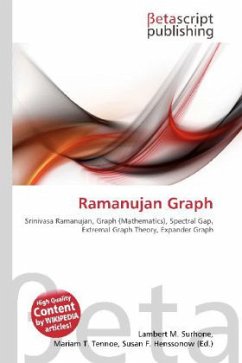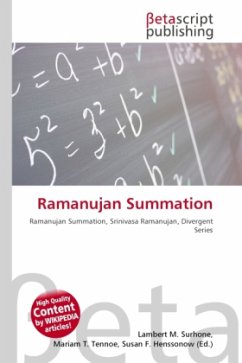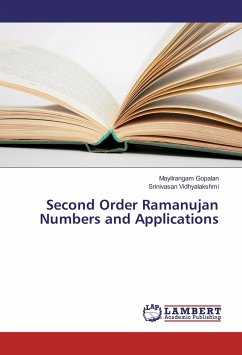
Ramanujan Graph
Versandkostenfrei!
Versandfertig in 6-10 Tagen
26,99 €
inkl. MwSt.

PAYBACK Punkte
13 °P sammeln!
High Quality Content by WIKIPEDIA articles! A Ramanujan graph, named after Srinivasa Ramanujan, is a regular graph whose spectral gap is almost as large as possible (see extremal graph theory). Such graphs are excellent spectral expanders.Examples of Ramanujan graphs include the clique, the biclique Kn,n, and the Petersen graph. As Murty's survey paper notes, Ramanujan graphs "fuse diverse branches of pure mathematics, namely, number theory, representation theory, and algebraic geometry".Let G be a connected d-regular graph with n vertices, and let lambda_0 geq lambda_1 geq ldots geq lambda_{n...
High Quality Content by WIKIPEDIA articles! A Ramanujan graph, named after Srinivasa Ramanujan, is a regular graph whose spectral gap is almost as large as possible (see extremal graph theory). Such graphs are excellent spectral expanders.Examples of Ramanujan graphs include the clique, the biclique Kn,n, and the Petersen graph. As Murty's survey paper notes, Ramanujan graphs "fuse diverse branches of pure mathematics, namely, number theory, representation theory, and algebraic geometry".Let G be a connected d-regular graph with n vertices, and let lambda_0 geq lambda_1 geq ldots geq lambda_{n-1} be the eigenvalues of the adjacency matrix of G (see Spectral graph theory). Because G is connected and d-regular, its eigenvalues satisfy d = lambda_0 geq lambda_1 geq ldots geq lambda_{n-1} geq -d . Whenever there exists i with i d, define lambda(G) = max_{ lambda_i d} lambda_i .












